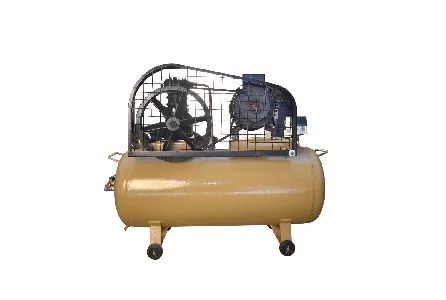Compressors of air are crucial instruments that are utilized in a wide variety of fields and applications because of their versatility.
These devices play an important part in modern-day business operations, whether used to power pneumatic tools on building sites or to supply medical facilities with clean air.
However, due to the extensive number of available alternatives, choosing the appropriate air compressor might take a lot of work.
This in-depth guide intends to make the process more manageable by providing an overview of the various kinds of air compressors, their respective applications, the criteria to consider when selecting one, and recommendations for improving its efficiency.
1. Understanding Air Compressors
A mechanical device known as an air compressor is a piece of equipment that changes the power that is normally supplied by an electric motor or a gasoline engine into the potential energy that is stored in the air that has been compressed.
Compressed air has a wide variety of applications; it can be used to operate pneumatic machines, furnish clean air in industrial settings, inflate tires, and perform a variety of other activities.
2. Types of Air Compressors
There are three primary types of air compressors:
a. Reciprocating (Piston) Compressors: These compressors use a piston-driven mechanism to compress air. They are commonly found in small to medium-sized applications and come in single-stage or two-stage configurations. Reciprocating compressors are versatile, durable, and suitable for intermittent use.
b. Rotary Screw Compressors: These compressors use two rotating helical screws to compress air. They are more suitable for continuous and industrial applications, providing a constant flow of compressed air.
c. Centrifugal Compressors: Centrifugal compressors use high-speed rotating impellers to accelerate air, which is then converted into pressure. They are ideal for large-scale industrial processes and heavy-duty applications.
3. Choosing the Right Air Compressor
Selecting the right air compressor depends on the specific needs of your application. Consider the following factors:
a. Required Air Volume (CFM): Determine the volume of air needed to power your pneumatic tools or equipment. Ensure the compressor’s CFM output matches or exceeds this requirement.
b. Operating Pressure (PSI): Check the maximum pressure your tools or equipment required, and choose a compressor with a PSI rating that meets or exceeds this value.
c. Duty Cycle: For continuous or heavy-duty applications, consider rotary screws or centrifugal compressors with higher duty cycles. For intermittent use, a reciprocating compressor may suffice.
d. Power Source: Choose between electric or gasoline-powered compressors based on the availability of power sources at your work location and portability requirements.
e. Tank Size: Larger tanks store more compressed air, reducing the frequency of the compressor cycling on and off. Consider the appropriate tank size for your specific tasks.
f. Portability: If you need a compressor for on-site or mobile use, consider a portable model with wheels and a compact design for easy transportation.
g. Noise Level: Evaluate the noise level of the compressor, especially if it will be used in indoor or noise-sensitive environments.
h. Maintenance Requirements: Different types of compressors have varying maintenance needs. Choose one that aligns with your maintenance capabilities and schedule.
4. Maintaining Your Air Compressor
Proper maintenance is essential to ensure the longevity and optimal performance of your air compressor:
a. Regular Inspections: Routinely inspect the compressor for any signs of wear, leaks, or damage.
b. Change Air Filters: Clean or replace air filters according to the manufacturer’s guidelines to ensure clean air intake.
c. Check Oil Levels: For oil-lubricated compressors, monitor oil levels and change the oil as recommended by the manufacturer.
d. Tighten Fittings: Periodically check and tighten fittings to prevent air leaks.
e. Drain Moisture: Regularly drain condensation and moisture from the air tank to prevent rust and damage.
5. Optimizing Air Compressor Performance
To maximize the efficiency and performance of your air compressor:
a. Reduce Air Leaks: Minimize air leaks by using high-quality fittings and hoses and ensuring proper connections.
b. Optimize Pressure Settings: Adjust the compressor’s pressure settings to match the specific requirements of each tool or application.
c. Install Air Dryers: For applications requiring clean and dry air, consider installing air dryers to remove moisture from the compressed air.
d. Use Shorter Hoses: Shorter hoses reduce pressure drop and increase the efficiency of the compressed air delivery.
Conclusion
Investing in an air compressor is a smart move because these machines can considerably boost both a company’s productivity and its efficiency across a wide range of sectors.
It is vital to have an understanding of the many types of compressors, their applications, and the aspects that should be considered when selecting a compressor to ensure that you make the most appropriate option for your particular requirements.
It is imperative that the compressor be maintained in an appropriate manner and that its performance be optimized to guarantee its continued usefulness during its lifespan.
With the information you have obtained from reading this comprehensive reference to air compressors, you will have the self-assurance to choose, employ, and maintain an air compressor that suits your needs.

